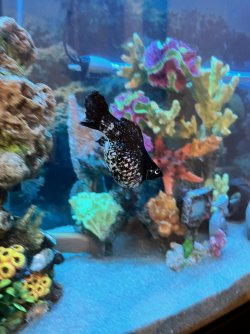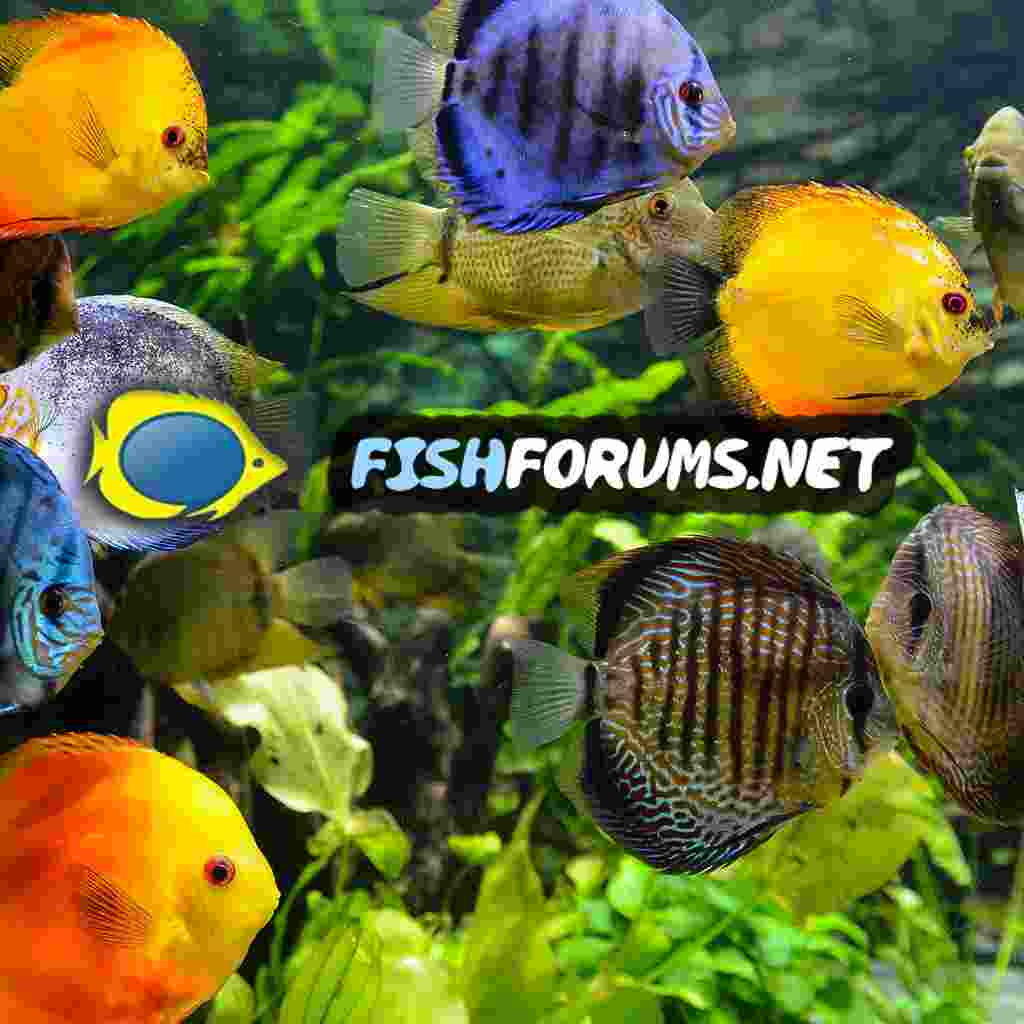KittyKae
New Member
Hey y’all! I consider myself pretty knowledgeable when it comes to tank things and what I lack knowledge on, Google to the rescue. But this one has me all sorts of confused. I “adopted” this Molly 3 months ago. My local fish store has a “Kae Tank” that he puts fish in that he can’t sell for whatever reason. This fish was in there after someone left it in a baggie by the door (people seriously suck.) He thought she was pregnant, I disagreed. After a 45 days of quarantine in a lone tank (20g), a month in the next stage tank (30g) and now 3 weeks in the last stage tank (60g) before hitting the mother-load (175g) main tank, she is still huge. She does fluctuate in size, but not by much (we are talking minutely where you wouldn’t notice if you weren’t purposely watching for a difference.) The photos I will attach were taken last night and this morning, this is her on her large scale. I have ruled out pregnancy (due to time), she doesn’t have the porcupine dropsy look, she poo’s like normal and eats regularly like all the others. Non-aggressive or territorial over space. You can see the size difference in a few photos between her and the other Dalmatians. She shares this tank with a variety of non-aggressive fishies and has never shown signs of stress. The only “trouble” she has with swimming is she kinda “waddles” like a 40 week pregnant women would…. Only while swimming and not being pregnant (unless this is the longest gestation in the history of a Molly)  So what I am hoping to figure out here is what do y’all think/know? Water quality in all of my tanks are perfect (pats herself on the back and gives a cheesy grin), they eat frozen food 1x e/o day, pellets/flakes 3x daily (on automatic timer), tank is vacuumed and tested before frozen (thawed) feeding every other day, weekly water changes Sunday, full clean the first Sunday of every month, filter media cycle every 1 - 3 months. Temp is between 78-80. Sand substrate, fluval sky light, fluval canister, swaps between spray bar and duck bill. (Trying to think of all the things people have asked for in other threads, lol.) If I missed anything, don’t hesitate to ask! Thanks in advance! Happy Fishing y’all!
So what I am hoping to figure out here is what do y’all think/know? Water quality in all of my tanks are perfect (pats herself on the back and gives a cheesy grin), they eat frozen food 1x e/o day, pellets/flakes 3x daily (on automatic timer), tank is vacuumed and tested before frozen (thawed) feeding every other day, weekly water changes Sunday, full clean the first Sunday of every month, filter media cycle every 1 - 3 months. Temp is between 78-80. Sand substrate, fluval sky light, fluval canister, swaps between spray bar and duck bill. (Trying to think of all the things people have asked for in other threads, lol.) If I missed anything, don’t hesitate to ask! Thanks in advance! Happy Fishing y’all!
Attachments
-
 DEA3D480-0BE7-4106-871C-AB106039379C.jpeg300.1 KB · Views: 109
DEA3D480-0BE7-4106-871C-AB106039379C.jpeg300.1 KB · Views: 109 -
 0D35F666-7B01-431E-AC59-F9E3DAC8E37E.jpeg307.9 KB · Views: 105
0D35F666-7B01-431E-AC59-F9E3DAC8E37E.jpeg307.9 KB · Views: 105 -
 2F3E49C2-9AD0-42AD-B139-A121013A9A8D.jpeg306.2 KB · Views: 108
2F3E49C2-9AD0-42AD-B139-A121013A9A8D.jpeg306.2 KB · Views: 108 -
 85078720-B03D-44C3-B7DD-E9C7AE6CBE47.jpeg249.1 KB · Views: 98
85078720-B03D-44C3-B7DD-E9C7AE6CBE47.jpeg249.1 KB · Views: 98 -
 68DA9EF9-E261-4D4B-85E4-89B4CBB326E7.jpeg313.2 KB · Views: 106
68DA9EF9-E261-4D4B-85E4-89B4CBB326E7.jpeg313.2 KB · Views: 106 -
 235D18F3-1DE1-4E71-B284-0485B0DD5448.jpeg309.3 KB · Views: 97
235D18F3-1DE1-4E71-B284-0485B0DD5448.jpeg309.3 KB · Views: 97 -
 8027ED48-7B6B-4C2B-9FAE-91C4F0BD5595.jpeg309.7 KB · Views: 103
8027ED48-7B6B-4C2B-9FAE-91C4F0BD5595.jpeg309.7 KB · Views: 103


